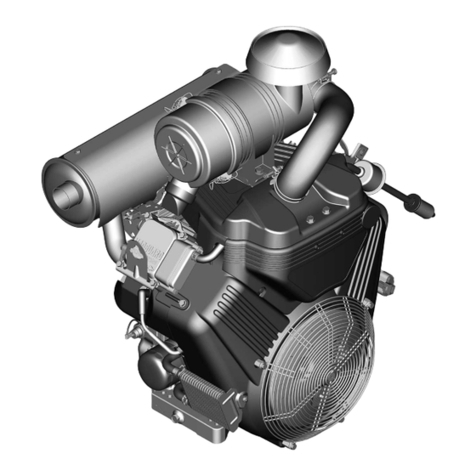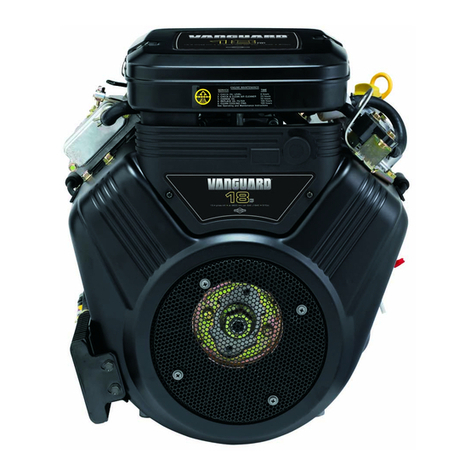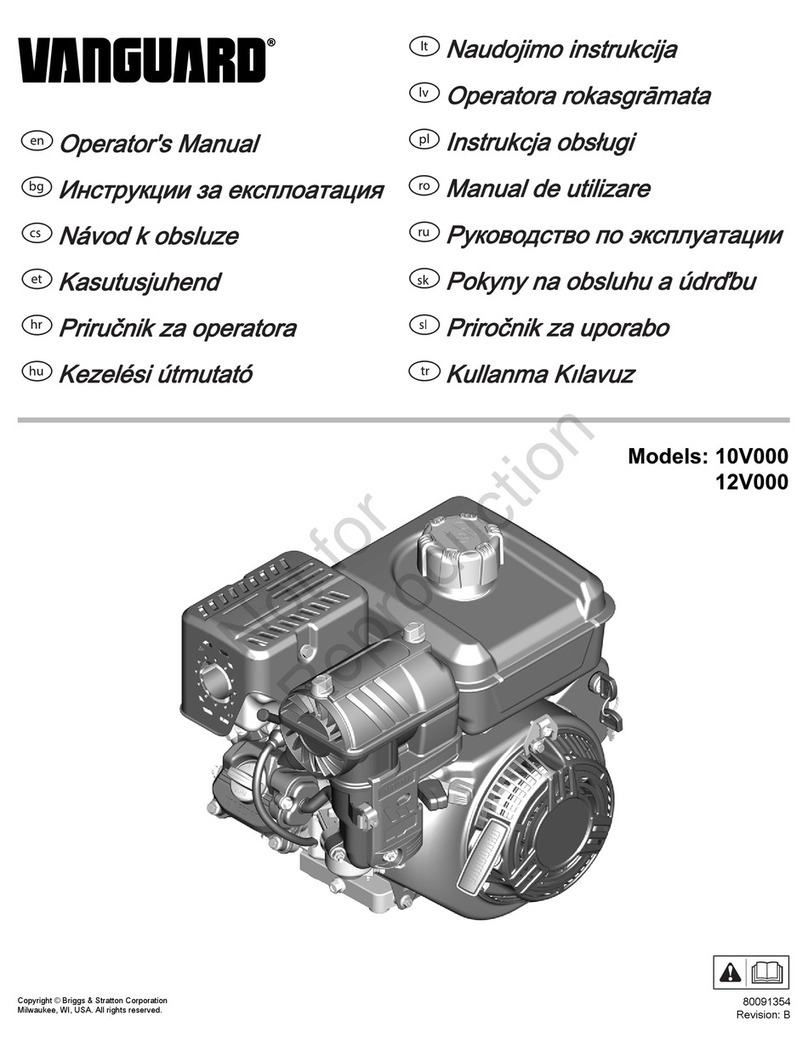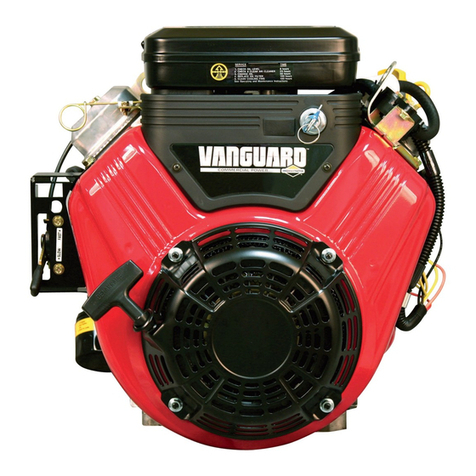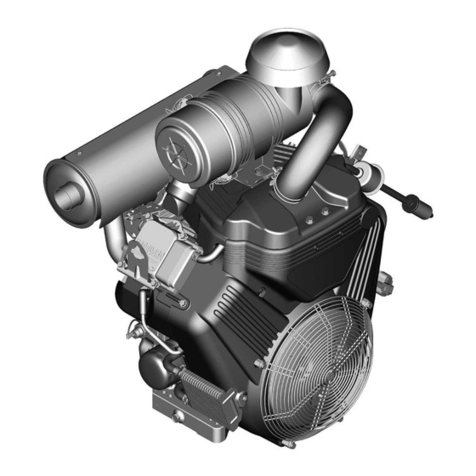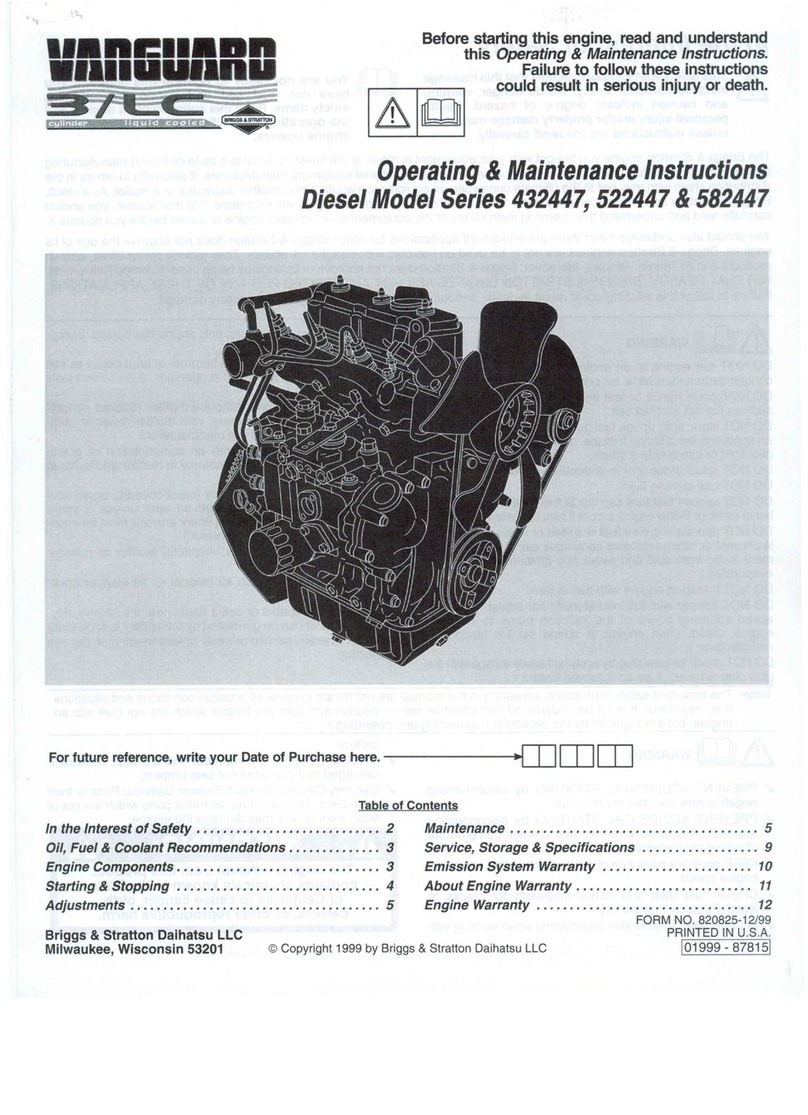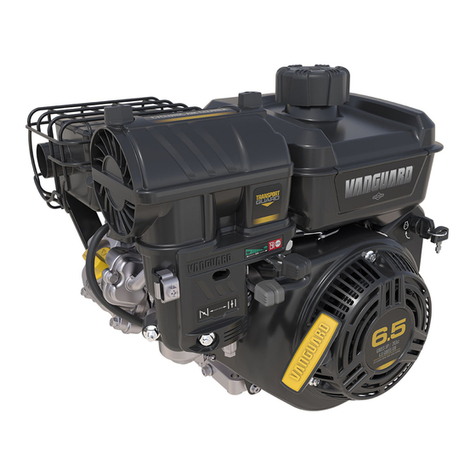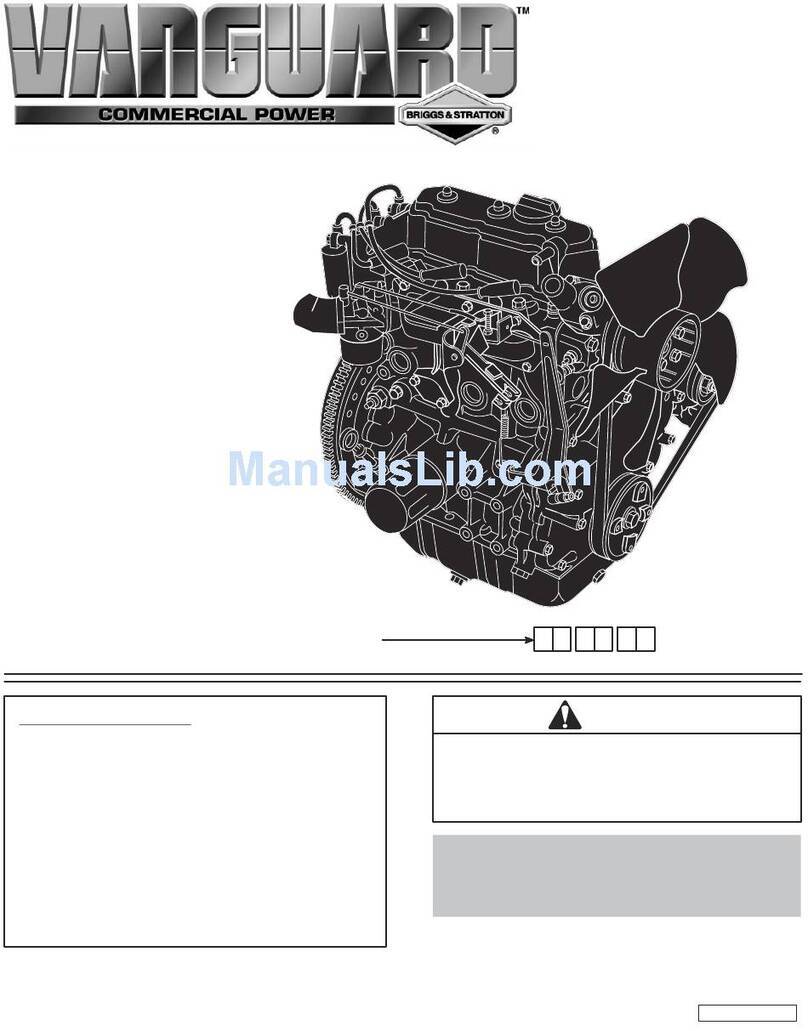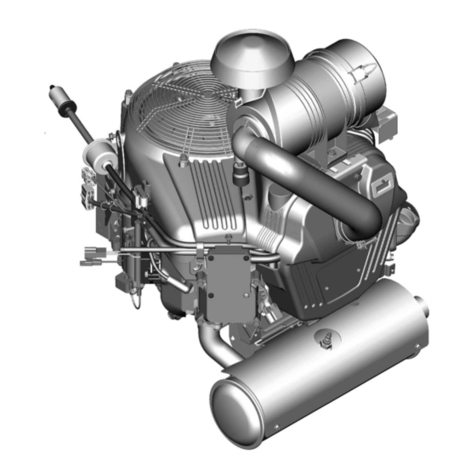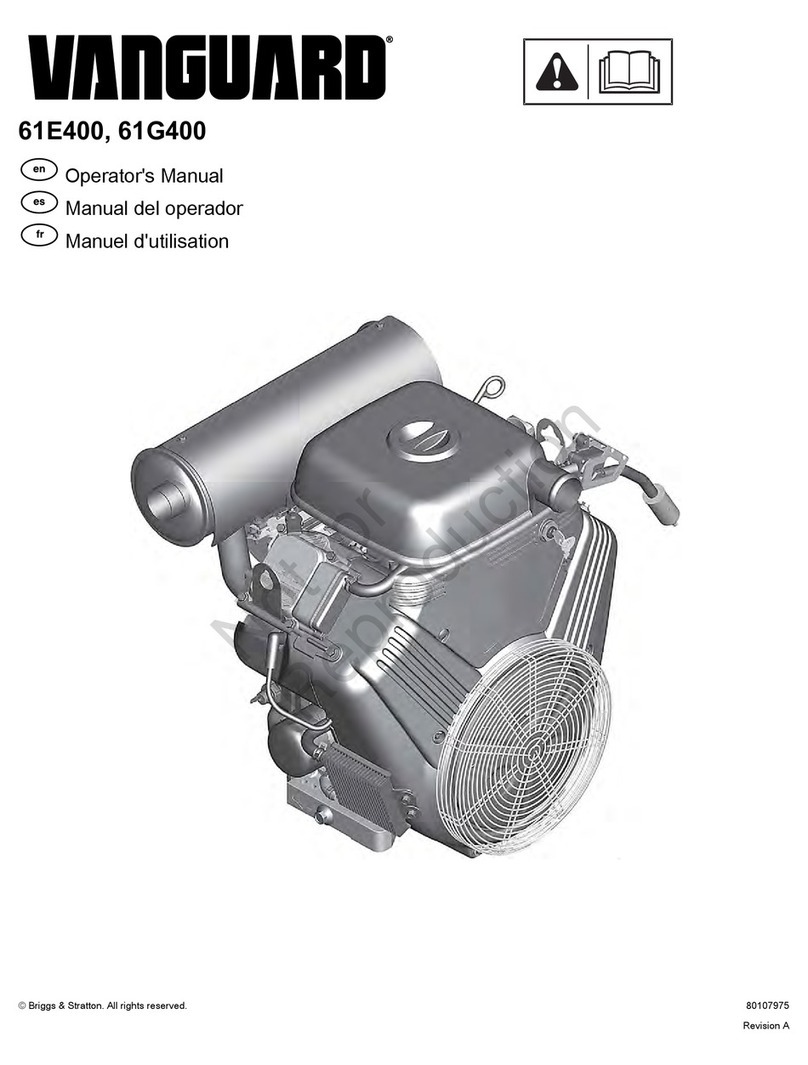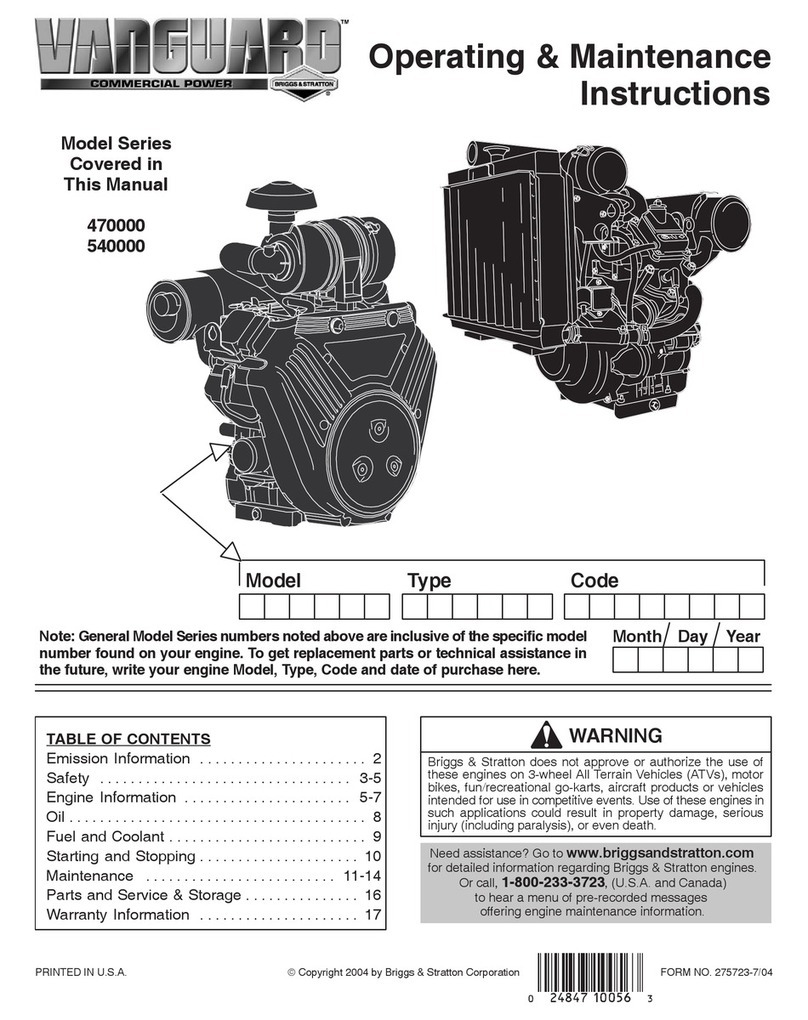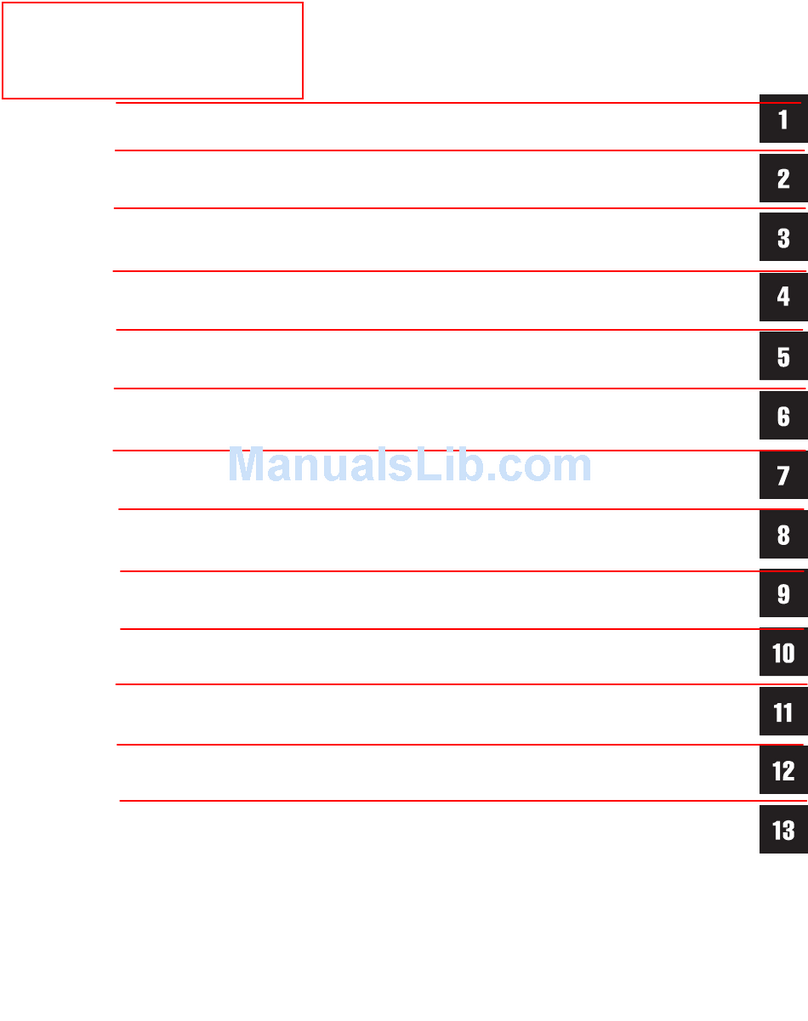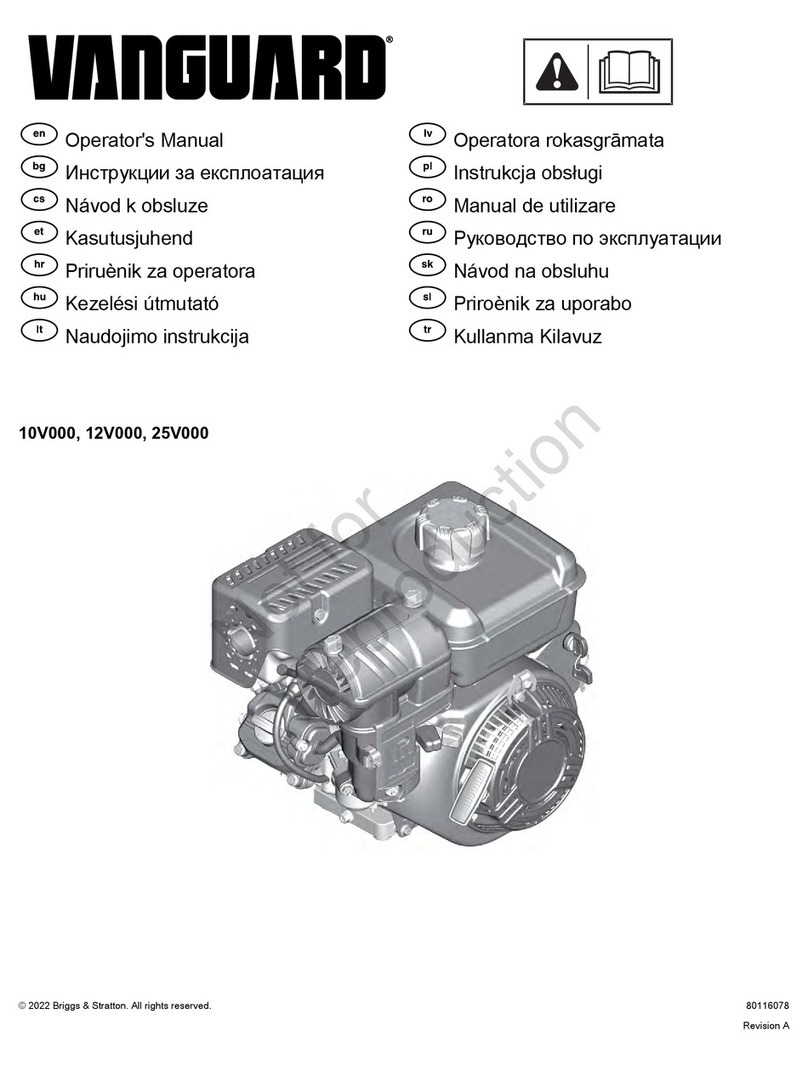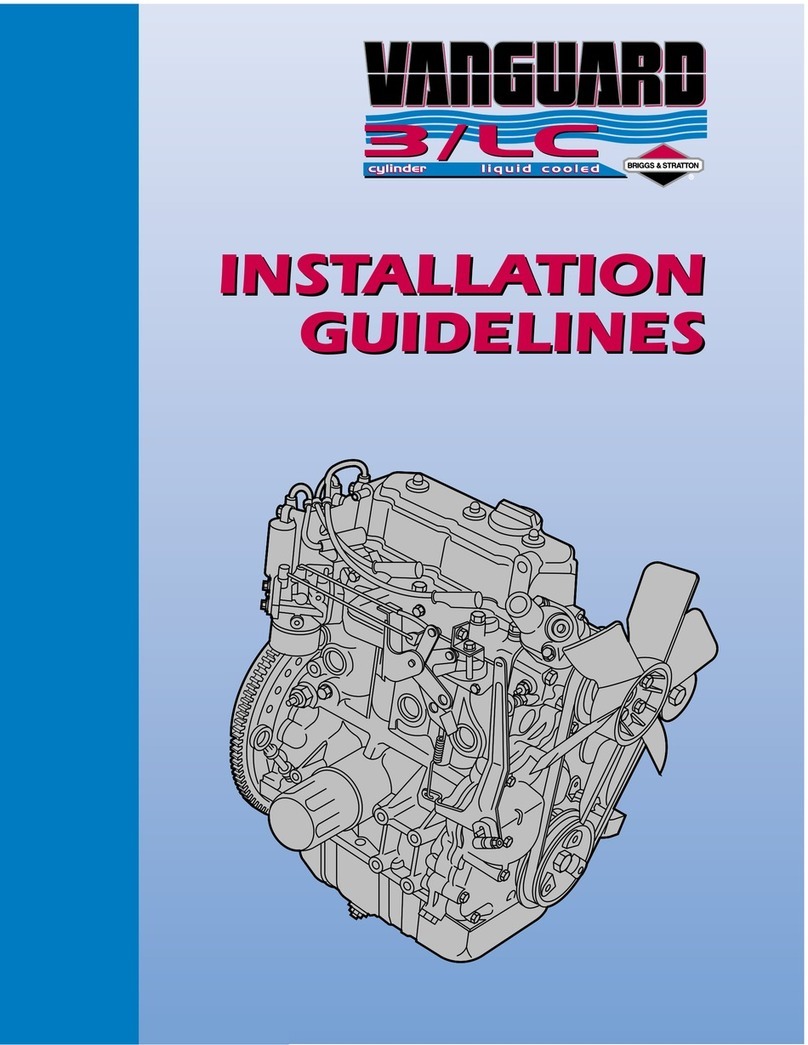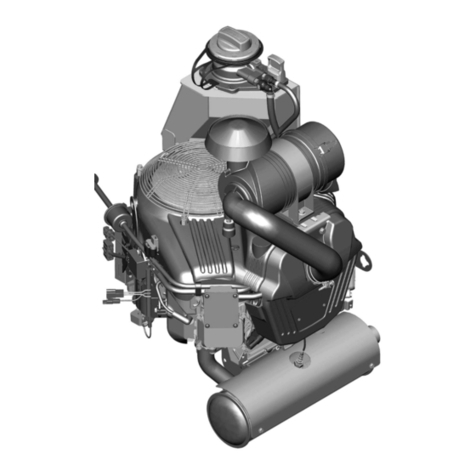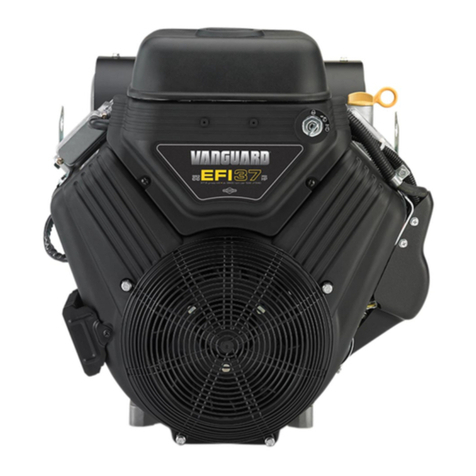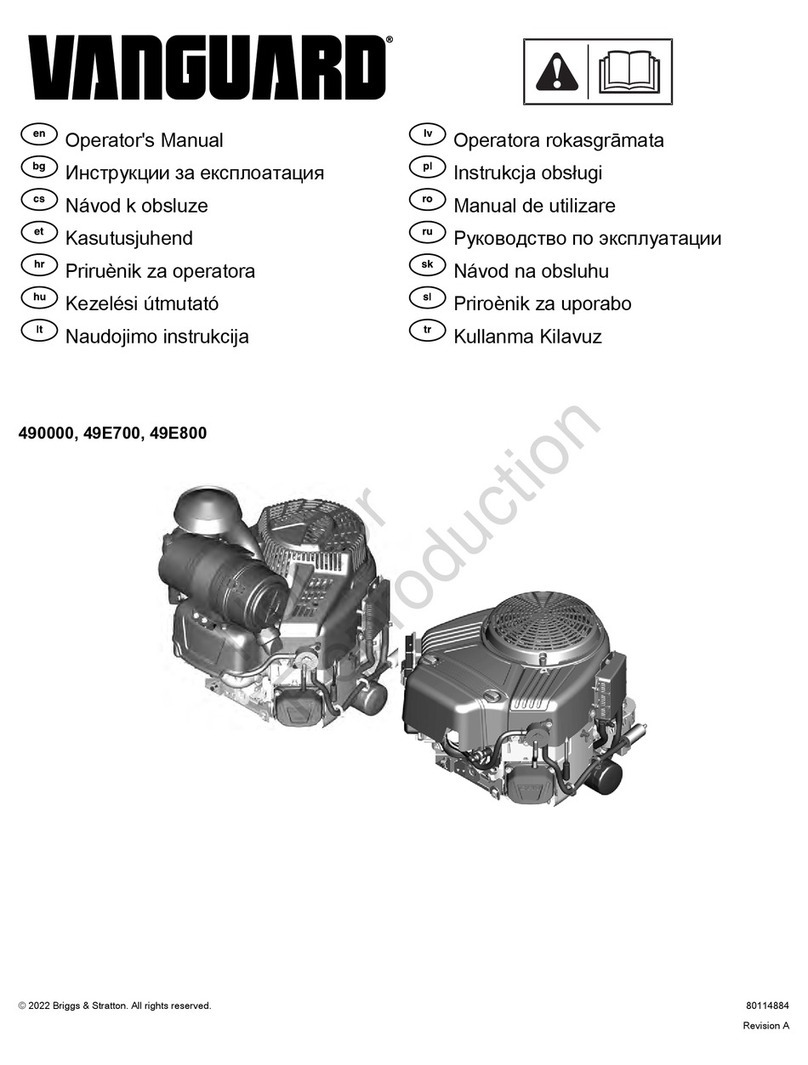
General Safety Messages
Prior to work, read and understand the section(s) of this
manual that pertain to the job. Follow all safety warnings.
• Always use fresh gasoline. Stale fuel can cause gum
deposits in the carburetor and cause leakage, flow
restrictions, or other problems.
• Check fuel lines and fittings frequently for cracks or
leaks and replace if necessary.
WARNING
Failure to read and obey the operator’s manual, all warnings,
and operating instructions could result in death or serious
injury.
WARNING
Briggs & Stratton® Engines are not designed for
and are not to be used to power: fun-karts; go-karts;
children's, recreational, or sport all-terrain vehicles (ATVs);
motorbikes; hovercraft; aircraft products; or vehicles used
in competitive events not sanctioned by Briggs & Stratton.
For information about competitive racing products, see
www.briggsracing.com. For use with utility and side-by-side
ATVs, please contact Briggs & Stratton Power Application
Center, 1-866-927-3349. Incorrect engine use could result in
serious injury or death.
WARNING
Fuel and its vapors are flammable and explosive. Fire or
explosion could result in burns or death.
When you add fuel
• Stop the engine. Before you remove the fuel cap, wait
a minimum of two (2) minutes to make sure that the
engine is cool.
• Fill the fuel tank outdoors or in an area that has good
airflow.
• Do not put too much fuel in the tank. For expansion
of the fuel, do not fill above the bottom of the fuel tank
neck.
• Keep fuel away from sparks, open flames, pilot lights,
heat, and other ignition sources.
• Frequently examine the fuel lines, fuel tank, fuel cap,
and connections for cracks or leaks. Replace damaged
parts.
• If fuel spills, wait until it dries before you start the
engine.
When you start the engine
• Make sure that the spark plug, muffler, fuel cap and air
cleaner (if equipped) are correctly installed.
• Do not crank the engine with the spark plug removed.
• If the engine is flooded, set the choke (if equipped)
to the OPEN or RUN position. Move the throttle (if
equipped) to the FAST position and crank until the
engine starts.
• If there is natural or LP gas leakage in the area, do not
start the engine.
• Because vapors are flammable, do not use pressurized
starter fluids.
When you operate the equipment
• Do not tilt the engine or the equipment at an angle which
causes fuel to spill.
• Do not choke the carburetor (if equipped) to stop the
engine.
• Do not start or operate the engine with the air cleaner (if
equipped) or the air filter (if equipped) removed.
When you do maintenance
• If you drain the oil from the top oil fill tube, the fuel
tank must be empty. If it is not empty, fuel leakage can
occurand could result a fire or an explosion.
• During maintenance if it is necessary to tilt the unit,
make sure that the fuel tank, if mounted on the engine,
is empty and that the spark plug side is up. If the fuel
tank is not empty, leakage can occurand could result a
fire or an explosion.
• Frequently examine the fuel lines, fuel tank, fuel cap,
and connections for cracks or leaks. Replace damaged
parts.
• Do not change the governor spring, links or other parts
to increase engine speed.
• Do not hit the flywheel with a hammer or hard object.
This could result in failure of the flywheel during
operation.
• Replacement parts must be of the same design and
installed in the same position as the original parts. Other
parts could result in damage or an injury.
When you move the location of equipment
• Make sure that the fuel tank is EMPTY or that the fuel
shut-off valve is in the CLOSED position.
When fuel or equipment is in storage with fuel in the fuel
tank
• Because pilot lights or other ignition sources can cause
explosions, keep fuel or equipment away from furnaces,
stoves, water heaters or other appliances that have pilot
lights.
8 vanguardpower.com
